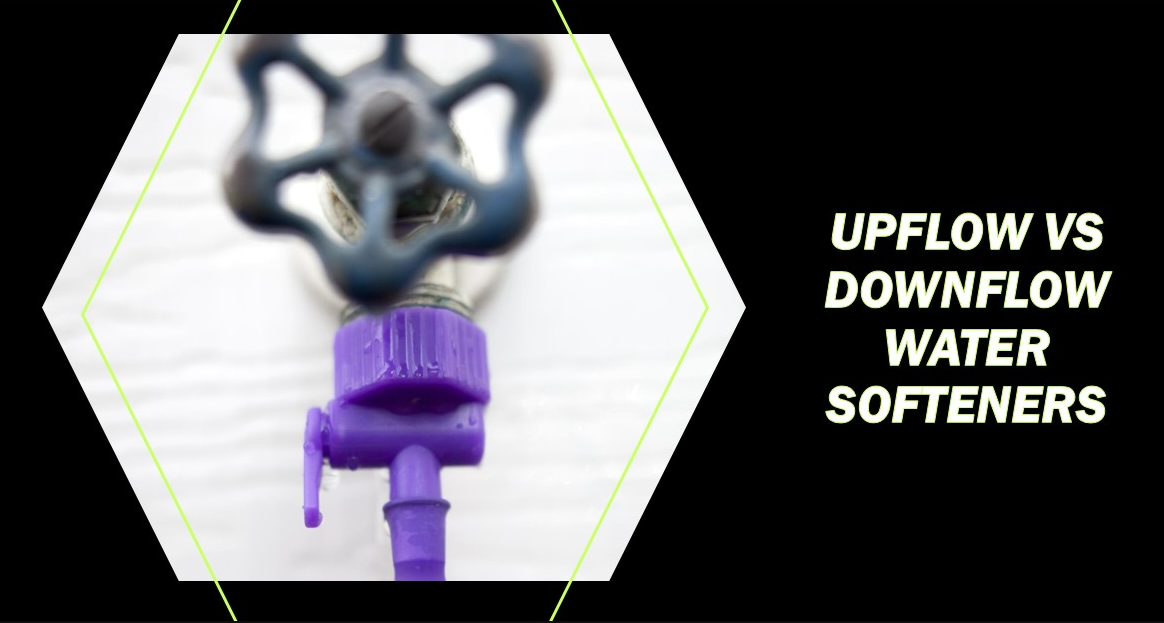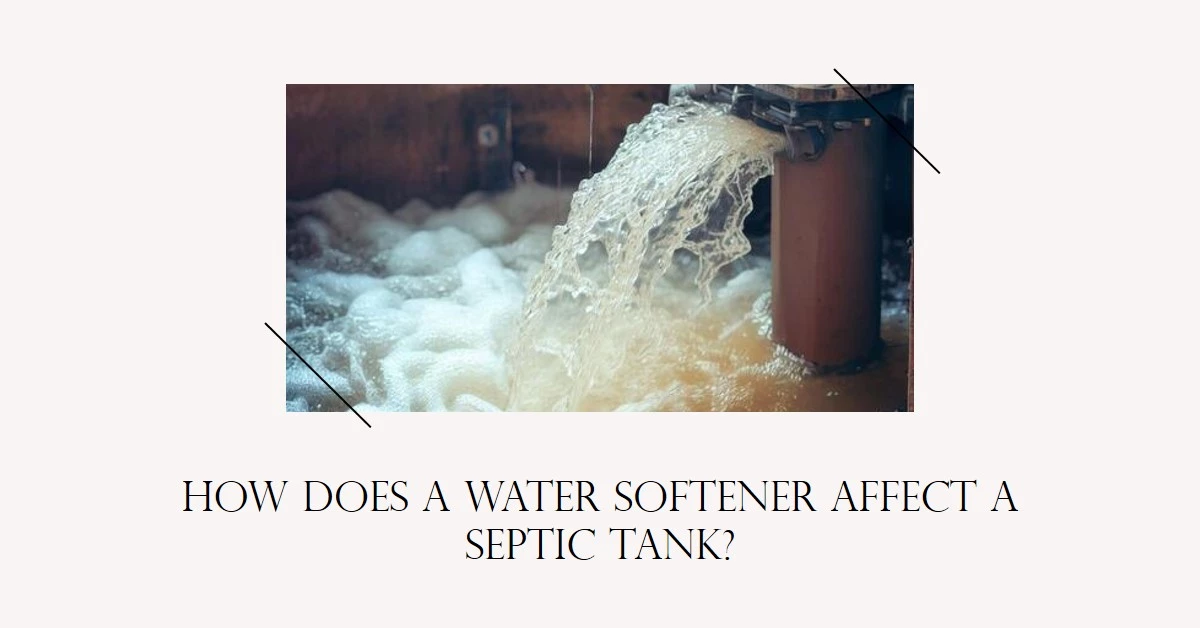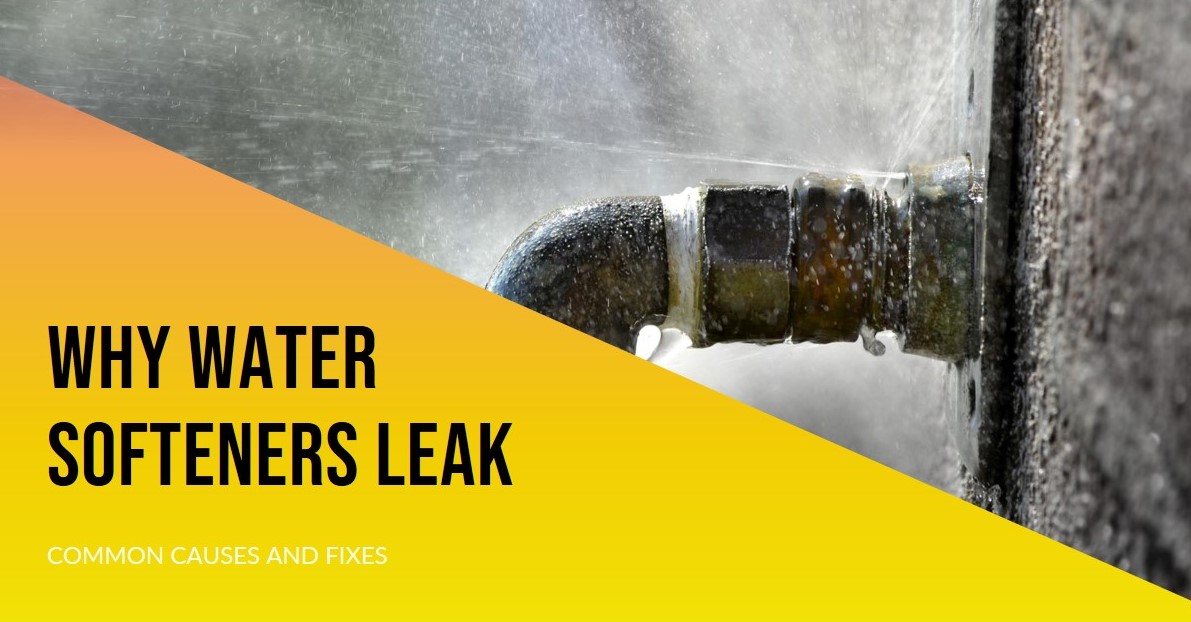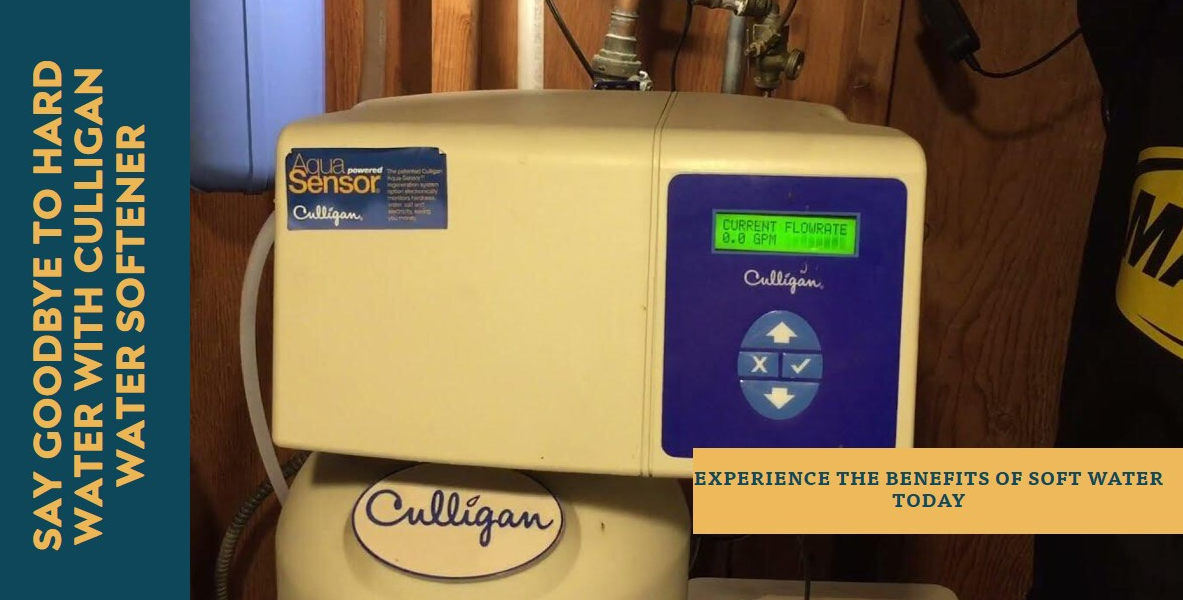Hard water can wreak havoc in homes, damaging appliances and plumbing fixtures and leaving behind unsightly mineral deposits. A water softener is an effective solution, removing the calcium and magnesium ions that cause hard water. But not all water softeners are created equal. When shopping for a system, one of the first decisions you’ll need to make is whether to choose an upflow or downflow water softener.
Understanding the key differences between these two types of water softeners will help you select the best system for your home and budget. This comprehensive guide covers everything you need to know about upflow vs. downflow water softeners.
What is Hard Water and Why Do You Need a Softener?
Hard water contains high levels of calcium and magnesium, which enter water sources by dissolving from limestone, chalk, and gypsum deposits. These mineral ions prevent soap from lathering properly and leave behind scale on plumbing fixtures, appliances, and glassware.
Over time, the effects of hard water can lead to:
- Spotty dishes and dingy looking clothes
- Dry skin and hair
- Scale buildup in pipes, restricting water flow
- Mineral staining on tubs, sinks, and toilets
- Damage to water heaters, dishwashers, and other appliances
Installing a water softener removes the calcium and magnesium ions, transforming hard water into soft, “soap-friendly” water. This prevents aesthetic issues like spotting and staining, while also protecting your plumbing and appliances.
While all water softeners perform this same basic function, upflow and downflow models work in slightly different ways. Understanding these differences will allow you to choose the best system for your home.
Upflow Water Softeners
Upflow water softeners are the most common type of residential water softening system. Water enters the mineral tank at the top, flows down through a bed of polystyrene resin beads, and exits soft through the bottom of the tank.
- In an upflow water softener, hard water enters from the top and exits softened from the bottom after passing through the resin beads.
As water passes through the resin, an ion exchange process takes place:
- Calcium and magnesium ions in the hard water are attracted to the resin beads, which are coated with sodium ions.
- The resin beads grab and hold onto the mineral ions.
- In exchange, sodium ions detach from the beads and enter the water.
- This ion exchange eliminates hardness minerals and replaces them with harmless sodium, softening the water.
Benefits of Upflow Water Softeners
Upflow water softeners have been popular in homes for decades due to the following advantages:
- Lower upfront cost – Upflow tanks are easier and cheaper to manufacture.
- Flexible installation – Can be installed in a basement, garage, crawlspace, or closet.
- DIY friendly – Relatively easy for a handy homeowner to install. No need to cut into water lines.
- Space efficient – Upflow tanks only need clearance for the brine tank next to the mineral tank.
- Easy maintenance – Resin beads are easily accessed from the top of the tank.
Drawbacks of Upflow Softeners
The main downside of upflow water softeners is:
- Lower efficiency – With the water inlet at the top, some unsoftened water can pass through the resin bed, reducing effectiveness. The mineral tank has to be larger to compensate.
Upflow systems are a great choice if you want an affordable and compact water softening system. However, downflow softeners offer significantly higher efficiency.
Downflow Water Softeners
In a downflow water softener, water enters from the top of the tank and exits from the bottom, but the opposite is true for the resin beads:
- In a downflow softener, water flows down through the tank while resin beads flow upward for maximum contact.
As water trickles down through the resin bed, hard minerals are exchanged for sodium ions, softening the full volume of water.
Benefits of Downflow Softeners
Downflow water softeners offer these advantages:
- Higher efficiency – All water passes through the full depth of the resin bed for maximum softening.
- Use less salt and water – Regenerate less frequently due to increased capacity and softening performance.
- Smaller size – Higher efficiency allows downflow tanks to be more compact.
- Longer resin life – Resin beads wear slower thanks to efficient regeneration cycles.
Drawbacks of Downflow Systems
The disadvantages of downflow water softeners include:
- Higher initial cost – More complex valving and manufacturing results in higher prices.
- Professional installation advised – Outlets and inlets must be connected to central plumbing lines.
- Limited placement – Tank must be installed close to water lines, often in a basement or garage.
- Trickier maintenance – Resin beads are accessed through the small bottom opening.
While downflow systems cost more upfront, their superior efficiency can pay off over years of use through salt and water savings.
Upflow vs. Downflow Water Softeners Compared
| Upflow | Downflow | |
|---|---|---|
| Cost | $$ | $$$ |
| Efficiency | Medium | High |
| Resin life | Shorter | Longer |
| Regeneration | More frequent | Less frequent |
| Salt use | Moderate | Low |
| Size | Larger tanks | Compact tanks |
| Installation | Flexible, DIY-friendly | Hardwired to plumbing |
| Maintenance | Easy | Moderate |
Choosing Between Upflow and Downflow Softeners
Upflow water softeners are best suited for:
- Homeowners on a budget
- Tight installation spaces
- DIY-friendly maintenance
Downflow softeners are ideal for:
- Those wanting maximum efficiency
- Long-term cost savings
- Limited sodium intake
- Professional installation
Talk to a water treatment professional to decide which type of system best fits your home. They can assess your water, family size, and cost considerations to make the right recommendation.
How Do Water Softeners Work? Resin Beads and Ion Exchange
The secret behind water softening lies in tiny resin beads contained within the mineral tank. These beads have a negative charge and are coated with positively charged sodium ions.
As hard water flows through the mineral tank, the resin beads grab onto the positively charged calcium and magnesium ions. It’s a simple ion exchange process:
- Hard mineral ions are exchanged for soft sodium ions as water passes through resin beads.
Over time, the beads accumulate hard minerals and run out of sodium ions. At this point, the softener initiates a regeneration cycle to refresh the beads:
- Salty water (brine) flows upwards through the tank, removing mineral buildup.
- The brine rinses down a drain line, clearing minerals from the softener.
- Fresh sodium-rich brine recharges the resin beads with soft ions.
The softener is now ready to exchange minerals again, providing a new batch of soft water.
Water Softener Costs
Shopping for a new water softener? Pricing depends on the type, size, and features. In general, you can expect to budget:
- $400 to $700 for a basic upflow softener suitable for 1-3 people
- $700 to $1,200 for a high-capacity upflow softener for 3-5 people
- $1,000 to $2,000 for a premium efficiency downflow softener
Added features like WiFi monitoring, water filters, and advanced controls can increase costs. Be sure to get several quotes to find the best price.
Operating costs are also a consideration. Downflow systems use less water and salt for regeneration, saving money over time. Maintenance costs are similar for both types of units.
Salt Consumption in Upflow vs. Downflow Softeners
A downflow water softener’s increased efficiency has salt savings benefits. Here’s how the two types compare:
- Upflow softeners use 15-25 lbs of salt per regeneration cycle. Typical setting is every 2-3 days. Salt usage is moderate.
- Downflow softeners use 8-12 lbs of salt per cycle. They regenerate less often – 5-7 days typically. Overall salt consumption is low.
For a family of four, a downflow softener may use 250-400 lbs of salt annually vs. 400-650 lbs for an upflow. Salt costs $5-$10 per 40 lb bag.
Water Softener Regeneration
Both upflow and downflow water softeners use an automatic regeneration process to periodically refresh the resin beads. Here’s how it works:
- Meter or time-based regeneration – The softener measures water usage or regenerates on a fixed schedule (every 2-7 days typically).
- Brine tank fills with salty water – Salt is dissolved to create a brine solution for cleaning and recharging resin beads.
- Brine solution flows through the tank – The control valve reverse flows the brine to rinse resin beads and remove mineral buildup.
- Rinse cycle flushes to drain – After soaking the beads, the brine rinses down the drain, carrying away hardness minerals.
- Brine recharges resin – Fresh brine flows through again to recharge beads with sodium ions, renewing the softening capacity.
The whole process takes about 2 hours. Most of the time is just soaking to allow thorough cleaning and recharging.
Water Softener Installation
A professional installation is recommended to integrate your softener with household plumbing correctly. However, DIY installation is possible for upflow models with some plumbing know-how.
Professional Water Softener Installation
Hiring a pro to handle installation typically costs $200 to $400 and takes half a day. The process includes:
- Shutting off main water supply
- Cutting into water lines to add bypass valves
- Securing and leveling the mineral tank
- Attaching inlet, outlet, drain lines
- Programming the computerized head
This hardwired installation ensures optimal water flow and softener function. Professionals can also size your softener correctly based on water usage.
DIY Water Softener Installation
With some handy skills, an upflow water softener can be DIY installed in 2-3 hours:
- Place the tank in the desired spot. Garage, basement, utility closet are common choices.
- Connect hoses from the water supply to the softener inlet and from the outlet to plumbing.
- Run a drain line from the softener down to a floor drain or laundry sink.
- Program the computer with your water hardness and usage.
- Add salt to the brine tank.
No need to cut into pipes. Hoses allow flexible placement options. But efficiency is reduced without direct plumbing.
Water Softener Maintenance Tips
All water softeners require occasional maintenance to keep them functioning properly. Follow these best practices:
- Check the salt level about once a week and refill as needed. Running out of salt will allow hard water through.
- Clean the brine tank annually to remove any salt bridge buildup. Use a broom handle and hot water.
- Add resin cleaners to the brine tank monthly or as needed to remove sediment and prevent clogging.
- Sanitize the resin beads once a year by pouring 1-2 cups of bleach into the brine well and running a manual regeneration.
- Replace filters (if equipped) per the manufacturer’s recommendation, usually every 3-6 months.
- Have a professional inspect your system once every 3-5 years to keep it running efficiently.
Following the manufacturer’s instructions for maintenance is key to maximizing the lifespan of your water softener.
Water Softener Sizing Guide
Proper sizing is crucial for your softener to handle your home’s water needs. As a general guideline:
| Household Size | Recommended Softener Size |
|---|---|
| 1-2 people | 24,000 grain capacity |
| 3-5 people | 30,000 – 40,000 grain capacity |
| 5+ people | 40,000+ grain capacity |
Large households or homes with extremely hard water may need an extra capacity or dual tank system.
Grains per gallon capacity depends on the:
- Water hardness level
- Daily water use
- People in the home
A water test helps determine the ideal softener specifications for your home.
Signs It’s Time to Replace Your Water Softener
As a mechanical appliance, water softeners have a lifespan of 10-20 years. Watch for these signs that indicate aging and the need for whole unit replacement:
- Noticeable decrease in water pressure
- Spike in salt usage
- Must regenerate frequently
- Loss of resin beads into water
- Rusting or leaking tanks
- Noisy operation
- Reduced softening performance
Routine maintenance can help maximize the working life of a water softener. But eventually parts fatigue and replacement is needed.
Conclusion
Hard water wreaks havoc in homes, from damaged hair and skin to ruined appliances. Investing in an efficient water softening system pays dividends through softer water and reduced maintenance costs.
Upflow and downflow water softeners both get the job done, but at different price points and with some key performance differences. Keep these facts in mind:
- Upflow softeners are more affordable but use more water and salt. Great for budget-friendly water softening.
- Downflow systems have a higher upfront cost but save money long-term through superior efficiency. Ideal for eco-friendly operation.
- Professional installation is best for optimal water flow but DIY is possible for upflow models.
Take time to understand your family’s needs and budget to select the best type of water softener for your home. Softer water with fewer harsh minerals is better for your home, appliances, and hair and skin.





